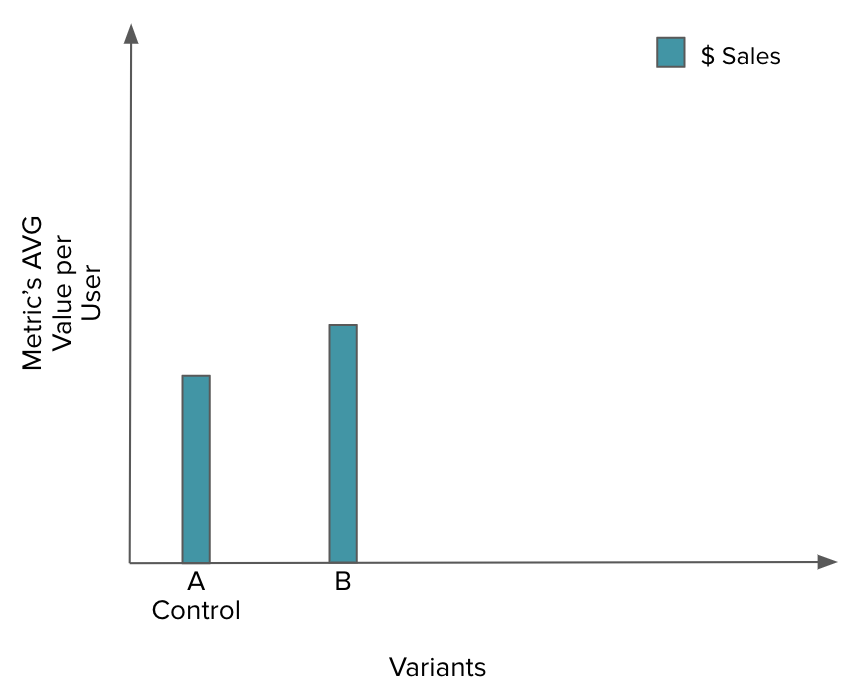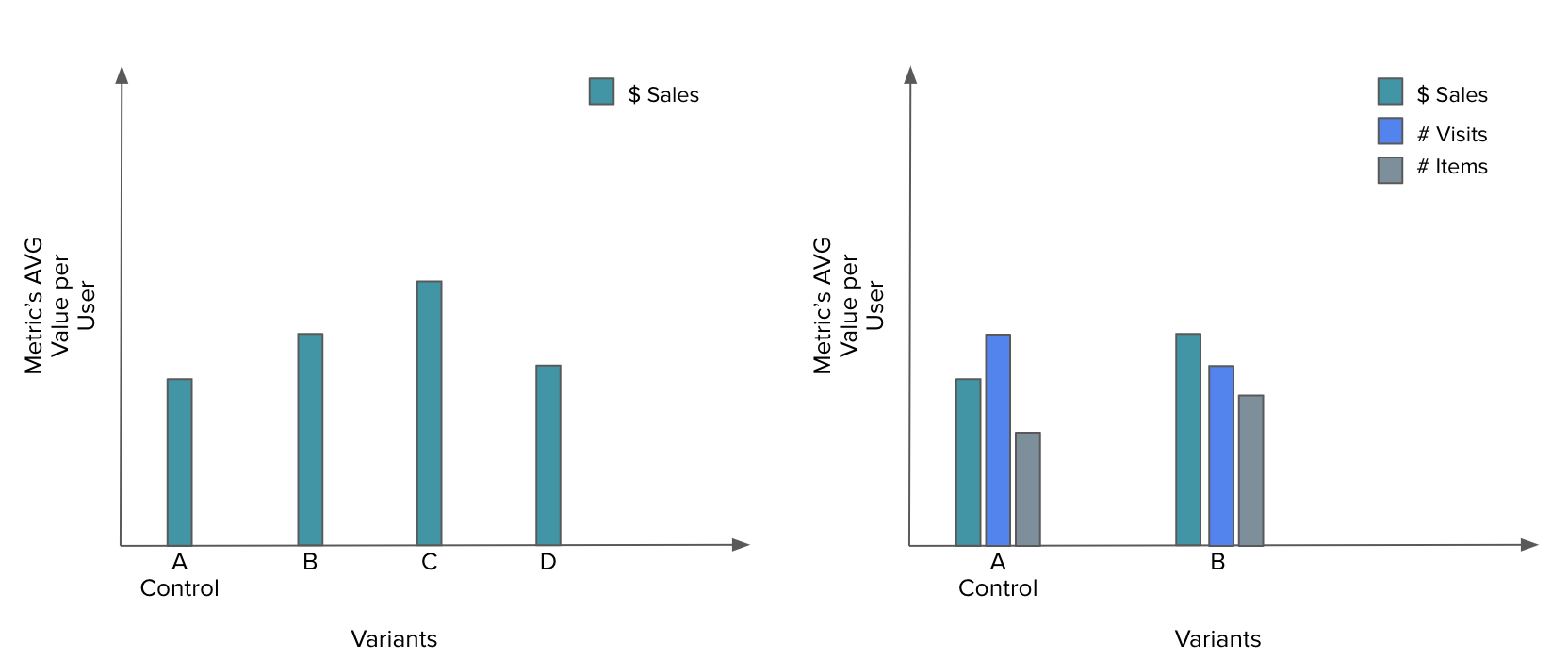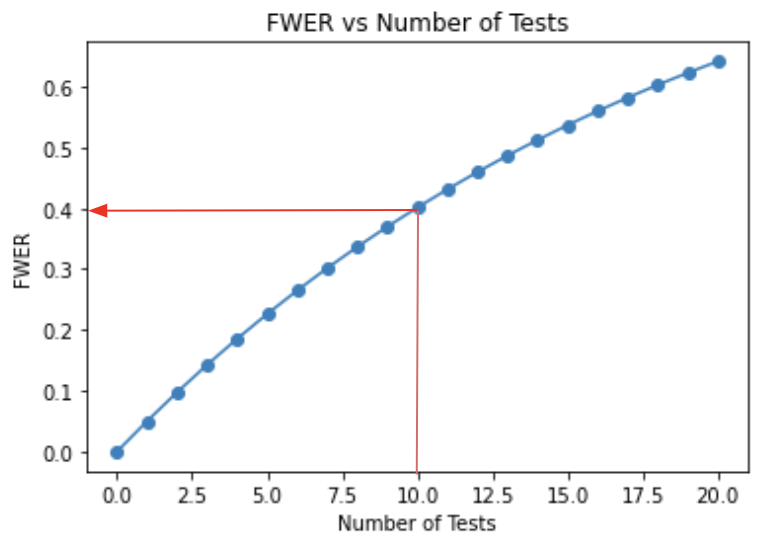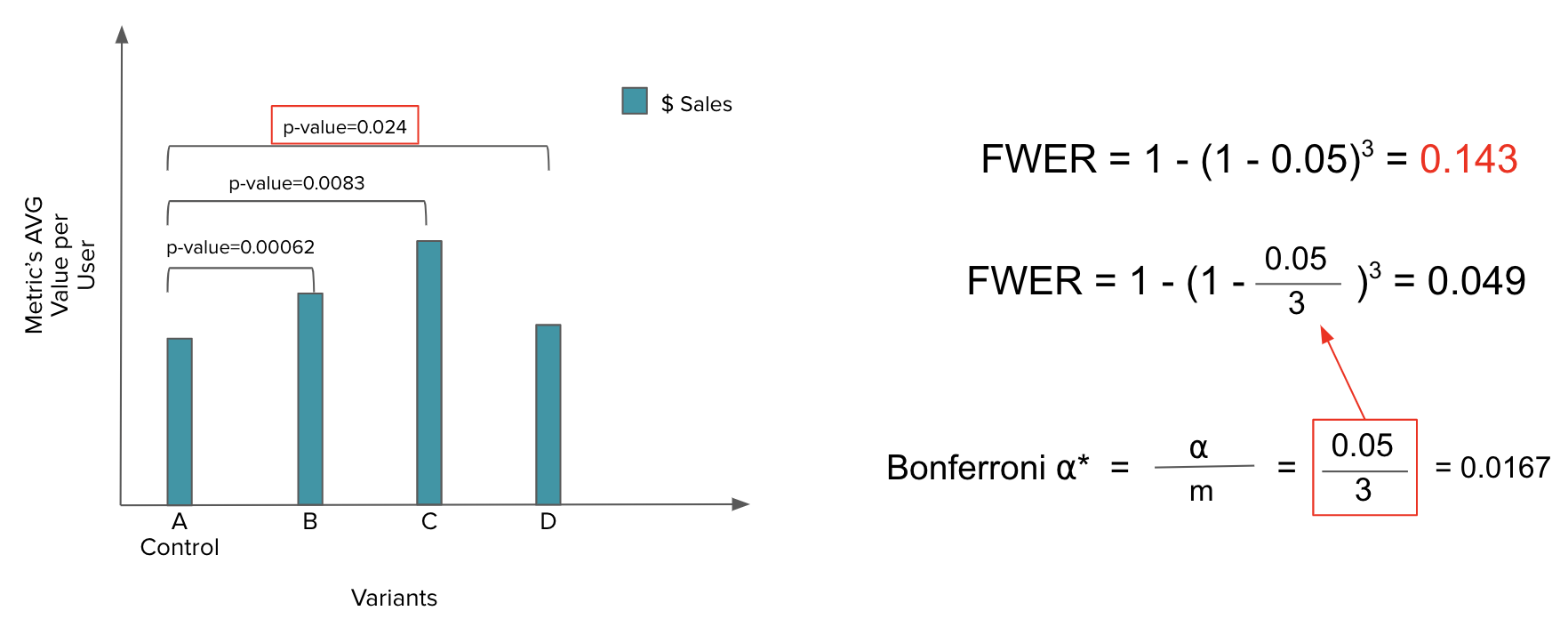Multiple comparisons tests
A/B Testing in Python

Moe Lotfy, PhD
Principal Data Science Manager
Introduction to the multiple comparisons problem
- Single comparison:
- Control (A) versus Treatment (B)
- One metric
- No subcategories

- Multiple comparisons:
- Multiple variants (A/B/n tests)
- Multiple metrics
- Granular categories

Family-wise error rate
- P(making Type I error) = $\alpha$ = 0.05
- P(not making Type I error) = 1 - $\alpha$
- P(not making Type I error in m tests) = (1 - $\alpha$)$^m$
- P(making at least one Type I error in m tests) = 1 - (1 - $\alpha$)$^m$ = FWER
Family-wise Error Rate (FWER): the probability of making one or more type I errors when performing multiple hypothesis tests.
- For a single test, FWER = 1 - (1 - $\alpha$)^1 = $\alpha$ = 0.05
- But what if we perform more than one test?
Family-wise error rate
import matplotlib.pyplot as plt
import numpy as np
alpha = 0.05
x = np.linspace(0, 20, 21)
y = 1-(1-alpha)**x
plt.plot(x,y, marker='o')
plt.title('FWER vs Number of Tests')
plt.xlabel('Number of Tests')
plt.ylabel('FWER')
plt.show()
- FWER = 1 - (1 - $\alpha$)^10
- FWER for 10 tests = 40%

Correction methods
- The simplest and most popular approach is the Bonferroni Correction
- Set the adjusted $\alpha$* to the individual test $\alpha$ divided by the number of tests m

- Less stringent Sidak correction
- Set FWER to desired $\alpha$, then solve for $\alpha_s$

Bonferroni correction example
- Without correction, all three tests are considered significant
- but the probability of making a type I error is inflated at 14%
- With a Bonferroni Correction, A versus D is no longer significant, but FWER is controlled at 0.049

statsmodels multipletests method
import statsmodels.stats.multitest as smt
pvals = [0.023,0.0005,0.00004]
corrected = smt.multipletests(pvals, alpha=0.05, method='bonferroni')
print("Significant Test:", corrected[0])
print("Corrected P-values:", corrected[1])
print("Bonferroni Corrected alpha: {:.4f}".format(corrected[3]))
Significant Test: [False True True]
Corrected P-values: [0.069 0.0015 0.00012]
Bonferroni Corrected alpha: 0.0167
Let's practice!
A/B Testing in Python

